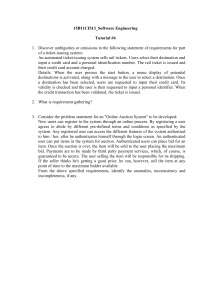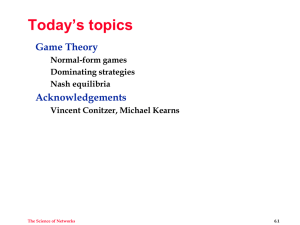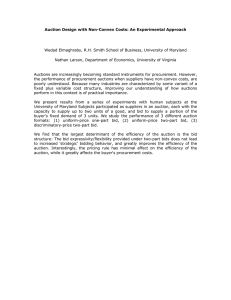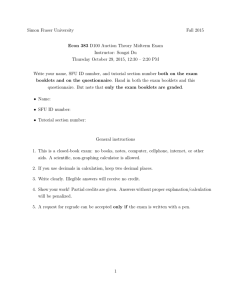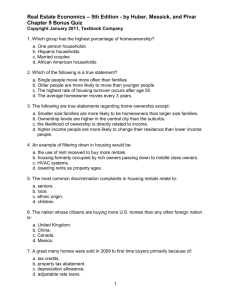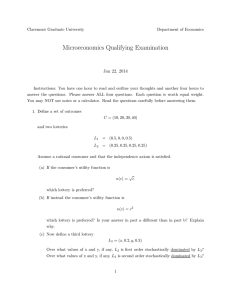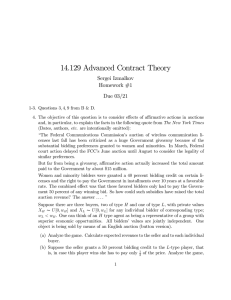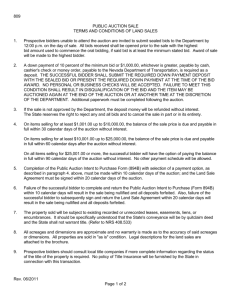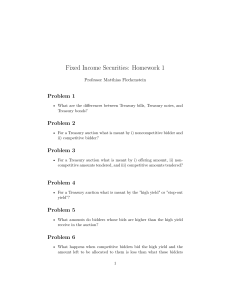Notes on Teaching Auction Theory
advertisement
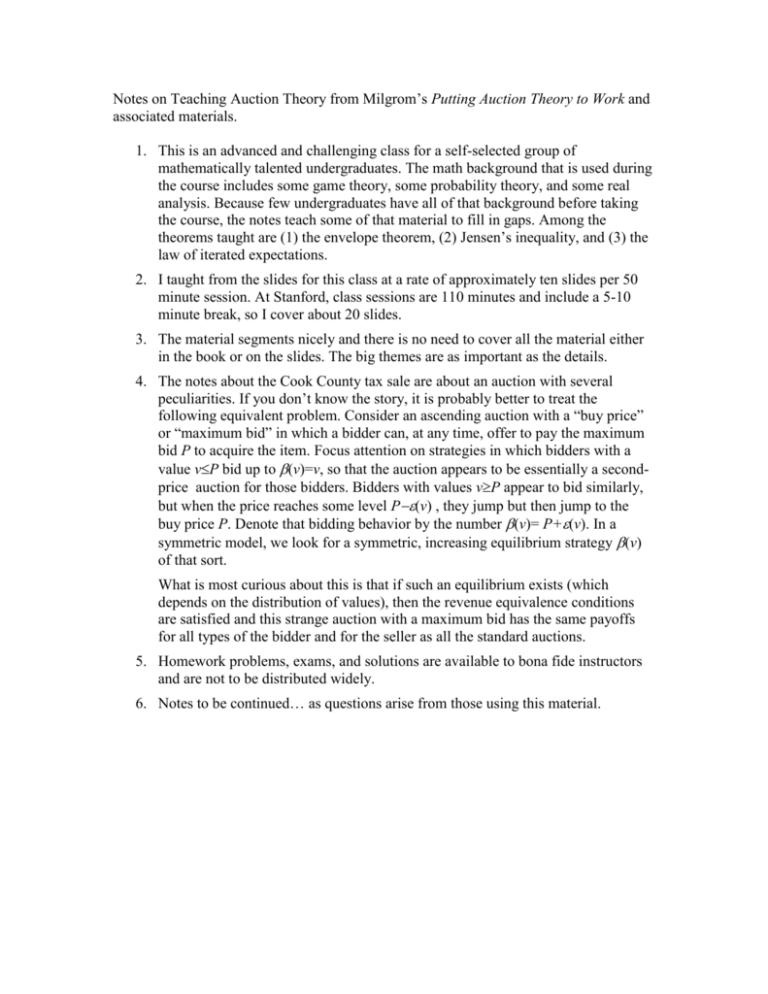
Notes on Teaching Auction Theory from Milgrom’s Putting Auction Theory to Work and associated materials. 1. This is an advanced and challenging class for a self-selected group of mathematically talented undergraduates. The math background that is used during the course includes some game theory, some probability theory, and some real analysis. Because few undergraduates have all of that background before taking the course, the notes teach some of that material to fill in gaps. Among the theorems taught are (1) the envelope theorem, (2) Jensen’s inequality, and (3) the law of iterated expectations. 2. I taught from the slides for this class at a rate of approximately ten slides per 50 minute session. At Stanford, class sessions are 110 minutes and include a 5-10 minute break, so I cover about 20 slides. 3. The material segments nicely and there is no need to cover all the material either in the book or on the slides. The big themes are as important as the details. 4. The notes about the Cook County tax sale are about an auction with several peculiarities. If you don’t know the story, it is probably better to treat the following equivalent problem. Consider an ascending auction with a “buy price” or “maximum bid” in which a bidder can, at any time, offer to pay the maximum bid P to acquire the item. Focus attention on strategies in which bidders with a value vP bid up to (v)=v, so that the auction appears to be essentially a secondprice auction for those bidders. Bidders with values vP appear to bid similarly, but when the price reaches some level P(v) , they jump but then jump to the buy price P. Denote that bidding behavior by the number (v)= P+(v). In a symmetric model, we look for a symmetric, increasing equilibrium strategy (v) of that sort. What is most curious about this is that if such an equilibrium exists (which depends on the distribution of values), then the revenue equivalence conditions are satisfied and this strange auction with a maximum bid has the same payoffs for all types of the bidder and for the seller as all the standard auctions. 5. Homework problems, exams, and solutions are available to bona fide instructors and are not to be distributed widely. 6. Notes to be continued… as questions arise from those using this material.

